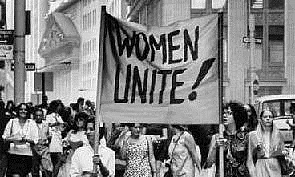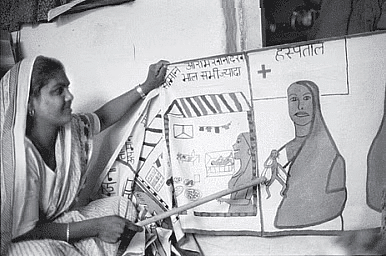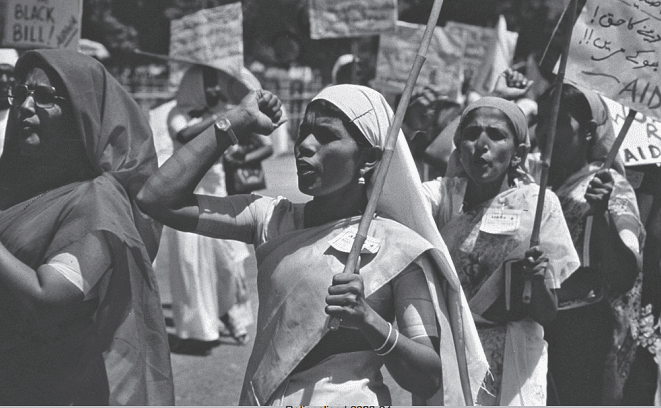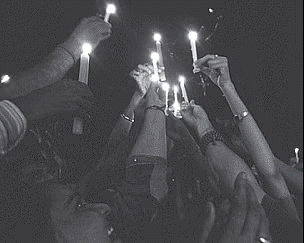Class 7 Civics Chapter 5 Notes - Women Change the World
| Table of contents |

|
| Introduction: |

|
| Fewer Opportunities and Rigid Expectations |

|
| Breaking Stereotypes |

|
| Learning for Change |

|
| Schooling and Education Today |

|
| Women’s Movement |

|
| Campaigning |

|
Introduction:
Imagine a world without the amazing contributions of women—it's almost impossible, right?
Throughout history, women have been at the forefront of change, shaping our world in countless ways. From fighting for equal rights to making groundbreaking discoveries, women have proven time and again that they are powerful agents of change.
Whether it's in science, education, sports, or politics, the impact of women is everywhere. Let's dive into the stories of some incredible women who have changed the world and continue to inspire us today!

Fewer Opportunities and Rigid Expectations
- A lot of the kids in Rosie Maam's class drew women as nurses and men as army officers.
- The reason for this is because they think that women are only good at certain jobs outside the home.
- For instance, many people believe that women excel as nurses due to their patience and gentleness, which is connected to their roles in the family.

- There's a belief that science demands a technical mindset, which is thought to be lacking in girls and women.
- These stereotypes lead to girls receiving less encouragement compared to boys in pursuing careers like doctors and engineers.
- Within many households, girls are steered towards prioritizing marriage over their professional aspirations post-education.
- Our society places various pressures on children, often through adult expectations or unkind teasing from peers.
- Boys, for instance, face pressure to secure lucrative jobs and may face ridicule if they deviate from traditional male norms.
- From a young age, boys are typically taught not to show emotions openly, reinforcing these strict societal expectations.
Breaking Stereotypes
Most engine drivers are men. But 27-year-old Laxmi Lakra, from a poor tribal family in Jharkhand, has begun to change things.
- Laxmi’s parents are not literate but they struggled and overcame many hardships to make sure their children got an education.
- She studied in a government school. Even in school, Laxmi helped with the housework and did odd jobs.
- She studied hard and did well and then went on to get a diploma in electronics. She then took the railway board exam and passed it on her first attempt.
- She is the First Woman Engine Driver for Northern Railways.
 First Women Engine Driver Laxmi Lakra
First Women Engine Driver Laxmi Lakra
Learning for Change
- Attending school is a crucial part of your life. While it may seem normal for all children to go to school today, it wasn't always this way.
- In the past, only a few knew how to read and write, with most children learning the trades of their families.
- Even in families where skills like pottery, weaving, and craft were taught, the contribution of daughters and women was seen as secondary.
- Girls faced even greater restrictions, often excluded from learning entirely, and their contributions in family trades were viewed as merely supportive.
- In the nineteenth century, new ideas about education led to more schools and increased access to learning. Despite this, efforts were made to open schools for girls, and many women struggled to educate themselves.

Rashsundari Devi:
Rashsundari Devi from West Bengal, who secretly taught herself to read and write, defying societal norms and superstitions. Her determination allowed her to read religious texts and write her autobiography, "Amar Jiban," the first known autobiography by an Indian woman.
Her story reveals the difficulties women faced and highlights the importance of perseverance in pursuing education. Rashsundari Devi's autobiography Amar Jiban
Rashsundari Devi's autobiography Amar Jiban
- Society believed that educating women would bring bad luck, but Rashsundari secretly taught herself to read and write after her marriage.
- She had a strong desire to read a religious manuscript, Chaitanya Bhagabat, and had a dream about it.
- One day, her husband mentioned leaving the book at home, and she seized the opportunity to secretly learn by hiding a page and practicing with it.
- Rashsundari Devi's autobiography, reflecting her everyday experiences, highlights the challenges she faced.
- Despite societal norms, her determination allowed her to break barriers and share her story, providing a glimpse into women's lives in her time.
Rokeya Sakhawat Hossain:
She (1880-1932) was born into a rich family. Though she could read and write Urdu, she wasn't allowed to learn Bangla and English because people thought English would give girls bad ideas. With help from her brother and sister, she learned Bangla and English and became a writer.

- At 25, she wrote "Sultana's Dream" in English.
- The story is about Sultana visiting Ladyland, where women are free to study, work, and invent things like controlling rain and flying cars.
- Men are kept away because their violent ways were defeated by women's intelligence.
- Sultana wakes up and realizes it was a dream.
- Rokeya imagined women flying planes and cars when girls couldn't even go to school.
- Her education changed her life, helping her dream and write.
- She also helped other girls by starting a school in Kolkata in 1910, which is still open today.
Schooling and Education Today
- Schooling and education are pivotal in shaping individuals and preparing them for the challenges and opportunities of the modern world.
- Education today has evolved significantly, moving beyond the traditional model of imparting knowledge and focusing on holistic development.
- In the past, more boys and men in India could read and write compared to girls and women.
- The census in 1961 showed that 40% of boys and men could write their names, while only 15% of girls and women could.

- But in the latest census of 2011, these numbers improved to 82% for boys and men and 65% for girls and women. However, there's still a gap, with more boys being literate than girls.
- We see that girls from Scheduled Caste (SC) and Scheduled Tribe (ST) backgrounds leave school more than the overall girls' rate. This means that girls from these backgrounds are less likely to stay in school.
- The census also found that Muslim girls tend to spend fewer years in school than girls from other communities.

- If schools are far from home and there's no transportation, parents might not send their girls to school. Poor families may struggle with the cost of education, giving preference to educating boys.
- Discrimination by teachers and classmates also leads some children to leave school.
- The struggles faced by children from different backgrounds highlight the need for better access to education, addressing poverty, and tackling discrimination to ensure that all children, regardless of their background, have the opportunity to complete their education.
- The 2011 census also found that Muslim girls are less likely, than Dalit and Adivasi girls, to complete primary school. While a Muslim girl is likely to stay in school for around three years, girls from other communities spend around four years in school.
 Logo of Beti Bachao Beti Padao Andolan: A movement initiated by the BJP government
Logo of Beti Bachao Beti Padao Andolan: A movement initiated by the BJP government
There are several reasons why children from Dalit, Adivasi, and Muslim communities leave school.
- In many areas of the country, particularly in rural and impoverished regions, there might not be proper schools or consistent teachers available.
- Lack of transportation such as buses or vans could lead to parents being unwilling to send their daughters to school.
- Several families face financial challenges and are unable to afford education for all their children.
- In such circumstances, boys might be favored over girls. Additionally, some children drop out of school due to discrimination from both teachers and classmates.
Women’s Movement
Women and girls now have the right to study and go to school. There are other spheres – like legal reform, violence, and health – where the situation of women and girls has improved. These changes have not happened automatically.

- Women individually and together have faced challenges to make these changes. This struggle is called the Women's Movement.
- Various women and women's groups from different areas are involved in this movement. Many men also back the Women's Movement.
- The movement is very lively due to the variety, enthusiasm, and hard work of those participating. Different methods have been used to raise awareness, combat prejudice, and pursue fairness.
 Women Movement
Women Movement
Campaigning
Campaigns are crucial in the women's movement to combat discrimination and violence against women. These efforts have also resulted in the enactment of new legislation.
A law got approved in 2006 to safeguard women facing physical and mental abuse at home, known as domestic violence.

- Efforts by the women's movement prompted the Supreme Court to establish rules in 1997 safeguarding women from sexual harassment at work and in schools.
- In the 1980s, women's organizations nationwide protested against 'dowry deaths' - instances where young brides were killed by their in-laws or spouses seeking more dowry.

- Women's groups expressed their dissatisfaction with the lack of resolution in these cases by taking to the streets, engaging with the legal system, and exchanging information.
- Over time, this issue gained public attention through newspapers and society, leading to amendments in dowry laws to penalize families involved in dowry demands.
(i) Raising Awareness
- Women's movements do a crucial job in making people understand and know about the rights of women.
- They spread their message by organizing street plays, singing songs, and holding public meetings.
- This helps in reaching out to more people and creating awareness about the issues that affect women's rights.
 Spreading awareness through posters
Spreading awareness through posters
(ii) Protesting
- The women's movement speaks up when women face wrongdoing or when laws and policies go against their interests.
- They use public rallies and demonstrations as strong ways to bring attention to these unfair situations.
 Mass movements by women in India
Mass movements by women in India
(iii) Showing Solidarity
- The women's movement is not just about fighting for women's rights; it's also about coming together and supporting other women and their various causes.
- It emphasizes the importance of solidarity, where women unite to help each other and address a range of issues affecting women as a whole.
- This unity makes the movement stronger in advocating for positive changes in society.
 Women are holding up candles to demonstrate the solidarity between the people of India and Pakistan
Women are holding up candles to demonstrate the solidarity between the people of India and Pakistan
Important Terms
- Stereotype: A stereotype is a fixed, oversimplified idea or belief about a group of people based on things like gender, race, or age. It often leads to unfair judgments or assumptions about individuals.
- Discrimination: Discrimination occurs when we treat people unequally or disrespectfully. It happens when individuals or organizations act based on their prejudices. Discrimination often involves treating someone differently or making unfair distinctions.
- Violation: Violation happens when someone intentionally breaks a law or a rule, or openly shows disrespect towards it.
- Sexual harassment: This term refers to unwanted physical or verbal behavior of a sexual nature towards a woman, against her wishes.

|
63 videos|371 docs|46 tests
|
FAQs on Class 7 Civics Chapter 5 Notes - Women Change the World
| 1. What are some of the main challenges women face in education today? |  |
| 2. How can breaking stereotypes empower women? |  |
| 3. What role does the women’s movement play in changing perceptions about women’s education? |  |
| 4. How can learning lead to positive change for women? |  |
| 5. What initiatives have been successful in improving girls' education worldwide? |  |
















